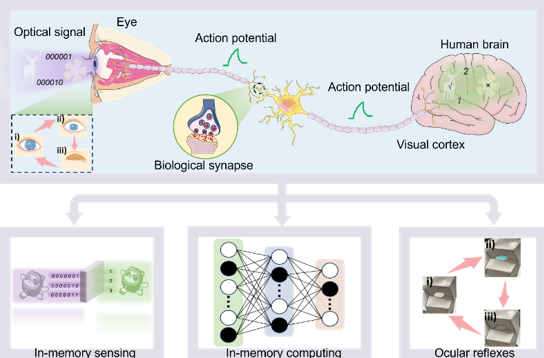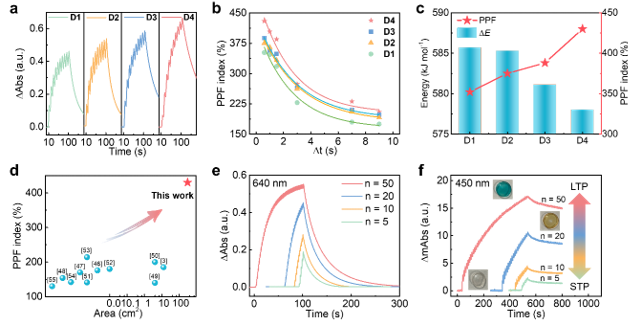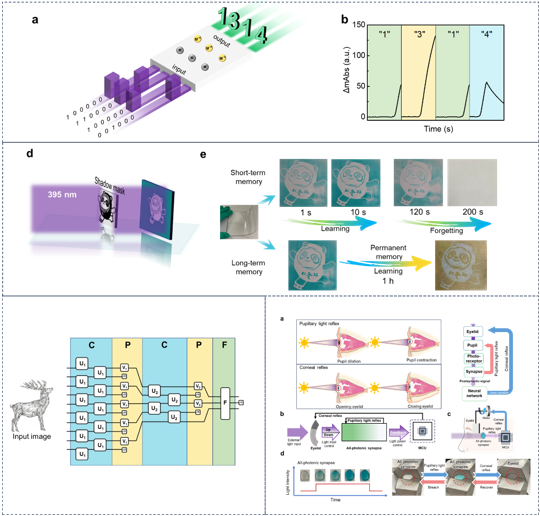【Background】
About 80% of the external information perceived by humans comes from vision. The human visual system has efficient memory and learning capabilities, can perceive external optical signals in real time, and has the ability to protect itself from excessive light damage. The optical information captured by the eye can be quickly transmitted to the visual cortex, stored and processed in a complex neural network. A variety of factors, including the wavelength, intensity, quantity and frequency of light, affect the connection effect between synapses, which in turn affects the overall neural network. In addition, the visual system can show adaptive responses to external illumination, such as pupil light reflex and corneal reflex. Pupillary light reflex is the dynamic adjustment of pupil diameter in response to changes in ambient light intensity, thereby adjusting the amount of light entering the eye and protecting the retina from damage. Corneal reflex manifests as "blinking", blocking light from entering the eye, further protecting the eye from strong irradiation. These adaptive behaviors are controlled by the synaptic weight update mechanism triggered by light source stimulation.
In recent years, optoelectronic synaptic devices that can convert light signals into memory current signals have developed rapidly. Due to the integrated sensing, storage and computing functions, they are widely used in simulated artificial vision systems. However, they usually require additional electronic components to simulate physiological responses such as pupil or corneal reflexes, which leads to complex circuit design and high energy consumption.
【Introduction】
Recently, the research group published a research paper titled "All-Photonic Synapses for Biomimetic Ocular System" in the internationally renowned journal Advanced Functional Materials. This work first adjusted the performance of all-optical synapses through simple molecular engineering, obtaining a record-breaking double-pulse facilitation value (PPF) of 430%. Then, the prepared large-area (400 cm2) and high-uniformity (96%) synaptic devices successfully simulated the basic functions of the visual system (in-memory perception, in-memory computing, and visual reflection). All-optical synapses have the ability to directly convert light signals into memory optical parameters (such as transmittance and luminous intensity). In artificial vision systems, this can not only simplify circuits, but also reduce power consumption.

Figure 1. Bionic vision system
Point 1: Structure-activity relationship and regulation of synaptic performance

Figure 2. Molecular structure and performance characterization
Different positions of methyl groups in the material will produce different degrees of steric hindrance, resulting in different degrees of distorted conformations, which leads to the order of HOMO energy levels: D1<D2<D3<D4. At the same time, the paramagnetic signal intensity after UV irradiation is D1<D2<D3<D4, indicating that under the same conditions, D4 produces the most photoinduced free radicals among the four molecules. In addition, DFT calculations also prove that D4 has the smallest energy barrier for generating free radicals. Therefore, both experimentally and theoretically, we have successfully established the relationship between molecular structure (position of methyl groups) and synaptic performance (PPF).
Point 2: Obtaining a record PPF value

Figure 3. All-optical synaptic plasticity and memory process
In biological synapses, real-time recognition or decoding of visual information is reflected by the double pulse facilitation (PPF) behavior of postsynaptic neurons. The optimal molecule D4 after regulation showed a PPF value of 430%, which is the highest value in organic optical synapses so far.
Point 3: Simulation of basic functions of the visual system

Figure 4. Vision system function simulation
The prepared large-area (400 cm2) and high-uniformity (96%) synaptic device first realized the in-memory perception function of the visual system for one-dimensional digital information conversion and two-dimensional image memory. Then, the quantum neural network (QCNN) was used to classify and recognize pictures to realize the in-memory computing function. Finally, the visual system prepared by combining the microcontroller with the all-optical synapse realized the corneal reflection and pupil light reflection functions.
Zhang Yincheng, a doctoral student in the research group, is the first author of the paper, and postdoctoral fellow Chen Hao is the co-first author. Professor Huang Hui, Associate Professor Cai Yunhao and Dr. Chen Hao are the co-corresponding authors of the paper. The author thanks the National Natural Science Foundation of China, the Chinese Academy of Sciences and other related projects for funding.
【Link】
All-Photonic Synapses for Biomimetic Ocular System. Adv. Funct. Mater 2024, e202409419.
https://doi.org/10.1002/adfm.202409419


